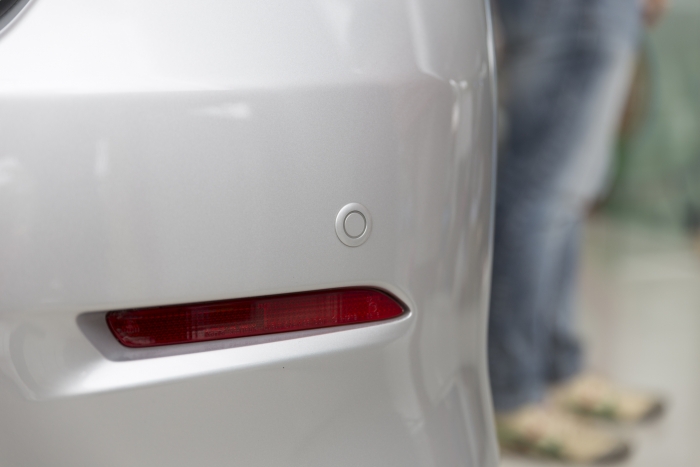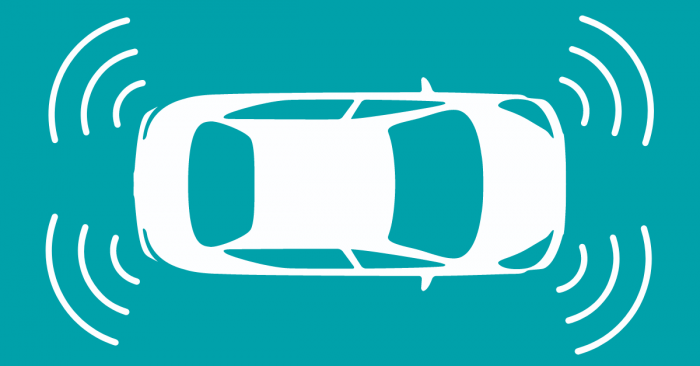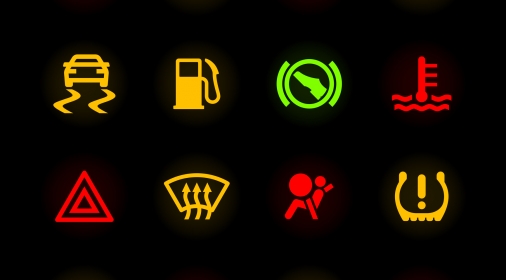How to Clean Parking Sensors
Parking sensors are a popular specification choice for most new car owners. Rear and side parking sensors are an aid when reversing or parking in a difficult spot. They help to avoid those unfortunate collisions with a wall or bollard, resulting in paintwork damage. That being said, as useful as parking sensors are for helping guide us into our parking space, no matter how tight that spot may be, it’s possible for sensors to become clogged with dirt and debris from the road. Dirty sensors can often result in the sensors giving inaccurate results or even making them appear broken. So, with that in mind, we have detailed how to clean parking sensors and why you should clean parking sensors below.
What Are Parking Sensors?
A parking sensor is a device that is installed on a vehicle and emits electromagnetic or ultrasonic waves that bounce back off nearby objects, sending a signal back to the car that something is nearby.
How Does A Parking Sensor Work?
Parking sensors are essentially a combination of ultrasonic sensors, controllers and displays that help you as the driver see things invisible to your mirrors. The parking sensors use a sound, sometimes with an additional visual on the car’s display, to let you know how close you are to obstacles.

Going into more detail, the sensors emit ultrasonic waves which reflect off nearby obstacles back to the sensors. The parking sensors then use this to calculate the distance between your car and the nearby obstacle. This process starts as soon as you put your car into R/reverse gear with the controller recognising that you’ve selected R/reverse gear and starting the emission of ultrasonic waves.
While parking, the sensors alert the driver to any obstacles close to the vehicle and, as the vehicle gets closer to the obstacle, the sound gets louder or more frequent as the ultrasonic waves reflect back quicker to the sensors, aiding the driver with knowing how close they are to their surroundings. Many parking sensor devices also link to a screen fitted to the car’s dashboard, so the driver can see where the obstacles are.
Most new vehicle models now come with reversing sensors as standard; however, for older vehicles, aftermarket parking sensors can be fitted to help you with parking and reversing in tight spots.
It is worth noting that Parking Sensors whilst helpful are only 99% accurate as obstacles that are too low, too thin or ridges won’t be picked up by the sensors.
How to Locate Parking Sensors?
Parking sensors are typically fitted to the rear bumper on cars to avoid any reversing mishaps. That being said, in a large number of car makes and models, they can also be installed in the front bumper too. Newer car models with higher specifications will typically have both front and rear parking sensors.

Rear View Camera
A large number of newer, high specification car models will also have a rear-view camera to aid parking. The rear camera allows the driver to see what is behind them when reversing, helping to avoid accidents resulting in bumper scuffs and paintwork scratches. That being said, if the rear camera is covered in dirt, the driver will not be able to see and will also not be able to audibly alerted to any hazards behind the vehicle when expecting to hear the sensors go off because of the camera being fitted instead of parking sensors. This could result in the vehicle being damaged or even someone being injured and shows how important it is to have a clean rear-view camera or parking sensors.
How to Clean Parking Sensors?
If your parking sensors are covered in road dirt, dust or mud, they may not work as efficiently. The sensor may mistake dirt for a close object, therefore setting the sensors off incorrectly. So, it’s important to keep your parking sensors clean to ensure they are working as they should be.
Cleaning your side and rear parking sensors is a pretty simple task. All you will need is a soft microfibre cloth, car shampoo and warm water. Next, all you need to do is follow a very simple three step washing process.
- Fill a bucket or bowl with warm water and add the advised amount of car shampoo.
- Dunk the microfibre cloth in the water solution and rinse. Be careful to gently remove any additional dirt that is on the cloth, as you don’t want to drag that around the surface of your car.
- Use the damp microfibre cloth to gently wipe the dirt off the parking sensors. Use a circular motion, with the tip of your finger, in order to ensure effective coverage and dirt removal.
The same method can be used to clean a rear-view camera sensor, as well as the parking sensors on the front of your car.
How Much Do Parking Sensors Cost? Are Parking Sensors Worth It?
Many new cars come with parking sensors as standard and many manufacturers offer them as an added option. However, if you did want to retro fit/fit them post-purchase, parking sensor systems range between £10s to £100s to purchase and you will have to factor in the labour cost to fit the system to your car. You may also need touch-up paint to cover where the parking sensor system was installed in the bumpers.
Assessing whether parking sensors are worth the cost is dependent on whether you feel the need for some extra help when parking. If you are regularly parking in tight spaces, parallel parking or reverse parking they may be a good investment for you at only a few £100s bought and fitted. Parking sensors do provide increased visibility, better parking, and avoid potential damage. This could prevent hundreds to thousands of pounds in repairs to your car saving time, money and stress.
What Is the Difference Between Park Assist and Parking Sensors?
Parking sensors are used for two different parking systems, park assist and active park assist. Park assist is the most common system and is what we have described above, whereby the parking sensors are used to give audio and sometimes visual alerts to the driver on how close they are to nearby objects. Active park assist works slightly differently to this.
Active park assist uses the normal parking sensors and sometimes added sensors placed elsewhere around your car in an ‘active’ way. Active park assist uses these sensors and other systems in the car to actually park the vehicles for you into the parking space.
Here to Help with Scratched Paint
If your vehicle has suffered damage to the paintwork, ChipsAway can fix it. We have a network of mobile specialists and fixed-base Car Care Centres across the UK. So, get a free no-obligation estimate using our online form here.






